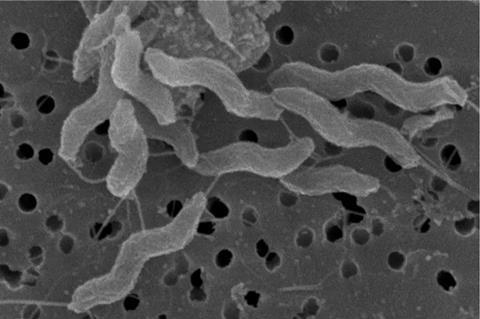Bacterial infections resulting in enteritis, sometimes extra-intestinal infections such as sepsis, continue to be a global health concern. A leading cause of diarrheal and extra-intestinal infectious mortality among children under 5 and elderly persons is infection with Campylobacter bacteria, against which there is no effective vaccine or medication.

READ MORE: Decoding the complex genetic network of antimicrobial resistance in Campylobacter jejuni
READ MORE: Curious calves drive shedding of pathogen in herds
An Osaka Metropolitan University-led team has recently uncovered what could be an important step toward preventing, diagnosing, and treating a species of Campylobacter bacteria.
Rapid idenitfication of conatminated food with antibody
Researchers including Professor Shinji Yamasaki and Associate Professor Noritoshi Hatanaka of the Graduate School of Veterinary Science and the Osaka International Research Center for Infectious Diseases at OMU focused on Campylobacter jejuni, the species of the bacteria that commonly causes gastroenteritis and sometimes extra-intestinal infections. Together they developed an antibody that can identify C. jejuni and inhibit the bacteria’s growth.
This monoclonal antibody reacts to a multiprotein complex known as QcrC, the expression of which is essential for the pathogenicity of C. jejuni. The QcrC molecule was found in multiple C. jejuni strains, lending high reliability to the antibody’s use in identifying the species. This molecule is also involved in energy production for C. jejuni, and the antibody acts to suppress this function, slowing the bacteria’s growth and decreasing pathogenicity.
“Our findings can lead to the development of preventive approaches so that Campylobacter infections do not become more severe, while also formulating a simple way to detect C. jejuni,” Associate Professor Hatanaka stated.
“The development of a simple detection system will be useful for the rapid identification of contaminated food, which will be beneficial for the control of C. jejuni infections and food poisoning, along with vaccine development.” Professor Yamasaki explained.
The findings were published in Frontiers in Microbiology.







No comments yet